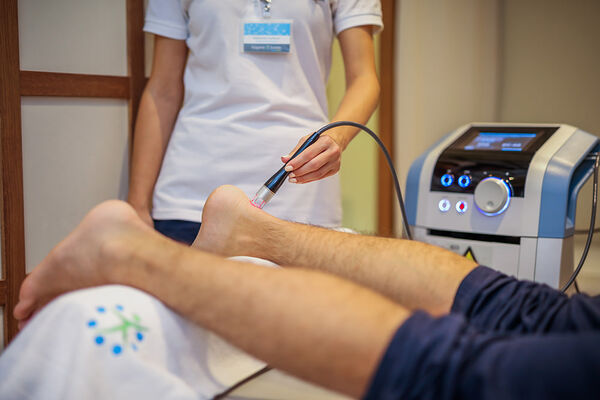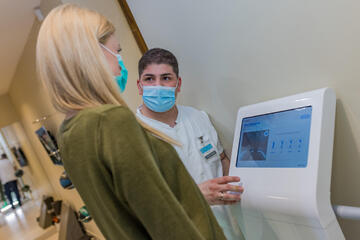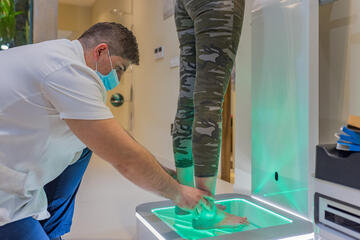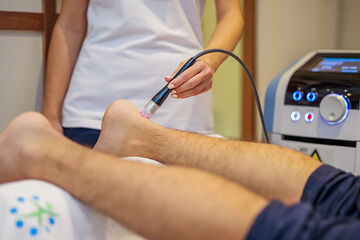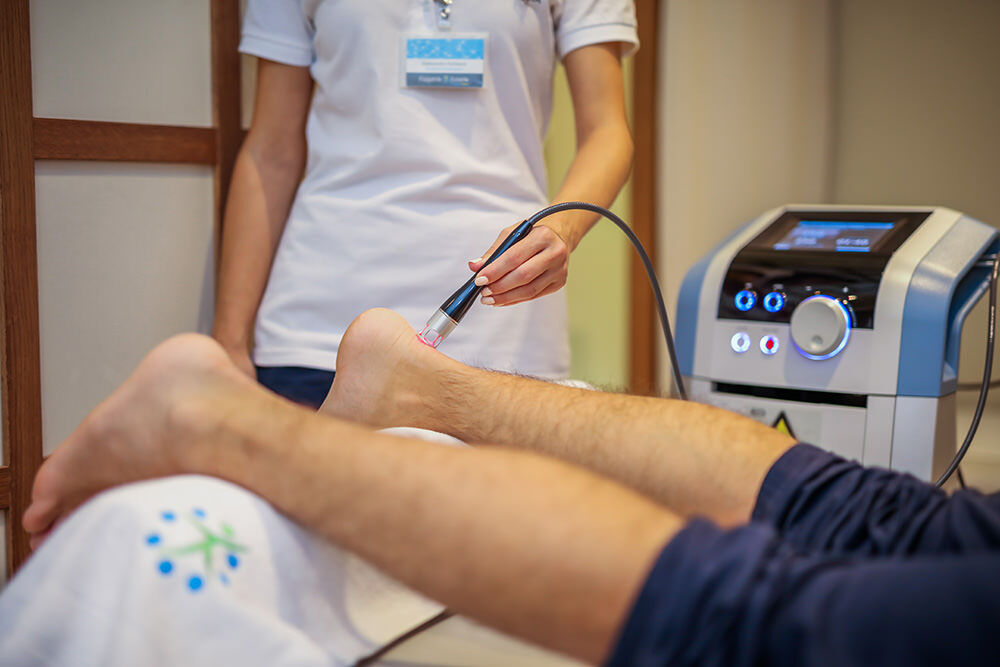
The heel bone (calcaneus) is surrounded by a special fat cushion, consisting of specialized fat cells placed in smaller parts. The function of this fat cushion is to unburden the heel, to contribute to the heel’s softness during walking and standing. There are a lot of ligaments touching the bottom of the heel. The inflammation of these ligaments usually progresses to the condition called Plantar Fasciitis.
Plantar Fasciitis
Plantar Fasciitis includes microscopic destruction of one of the ligaments extending to the back of the heel. It is a common condition and frequently found in women who are obese. It is also associated with the shape of the foot as well as with cases of recurrent painful activities which can cause an inflammatory process located at the back of the heel.
Patients with plantar fasciitis usually feel pain early in the morning when they wake up. As soon as the foot makes contact with the surface, a sudden painful sensitivity occurs at the back of the heel. The pain continues, and as the foot is stretched out by walking, the pain spreads. If the patient is walking and standing for a long period of time, the condition worsens throughout the day.
The Diagnosis
The diagnosis of plantar fasciitis must be confirmed by a specialist examination of the back of the heel where the pain originated from. The most common cause is an inflamed nerve or a pinched nerve under the bundle of ligaments. It can make the pain even greater.
The Treatment
The treatment of Plantar Fasciitis refers to the treatment of heel cushion, ligaments stretching and providing support to the arch of the foot. The main treatment involves unburdening the heel with a silicone pad. Stretching exercises are performed two to three times a day. A specially designed orthosis is used to stretch the foot during the night, with the foot being placed in an upright position, which prevents the “falling” of the foot during the night. The natural position of the foot during sleep rests the bundle of ligaments, which is then under a lot of stress when the patient gets up and walks in the morning. Most often, keeping that bundle of ligaments stretched (especially at night) helps. If none of these treatments are helping, the following therapies available at our center might: Shock wave, High Intensity Laser Therapy (HILT), Electrotherapy, Kinesiotherapy, Manual Therapy, which will reduce the inflammation, relieve the pain, while the last resort remains a surgical procedure (operation).


